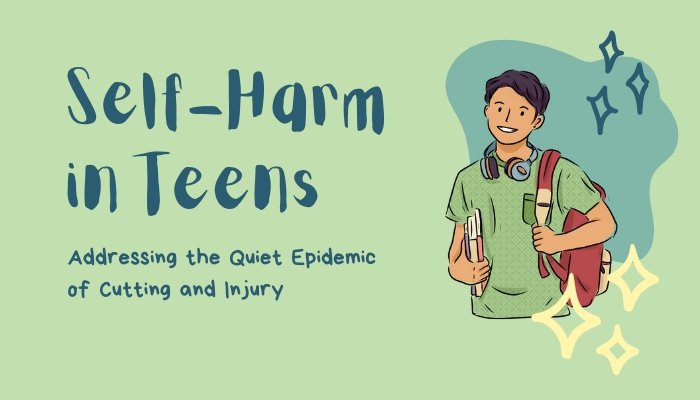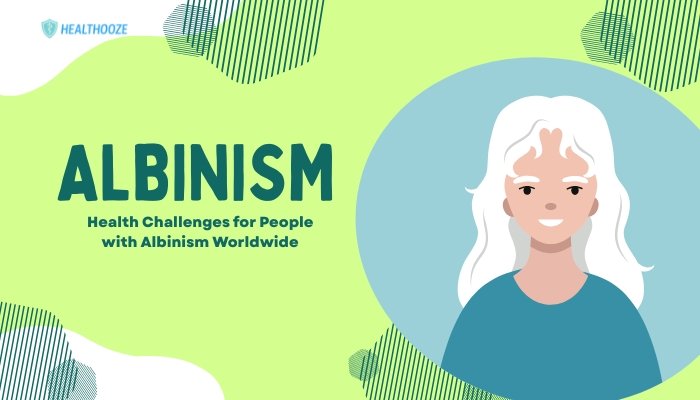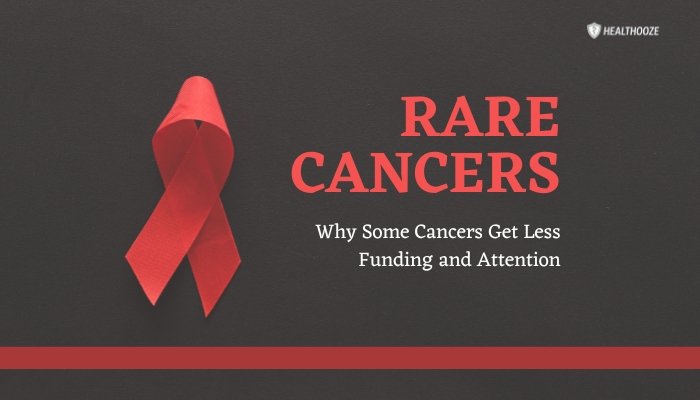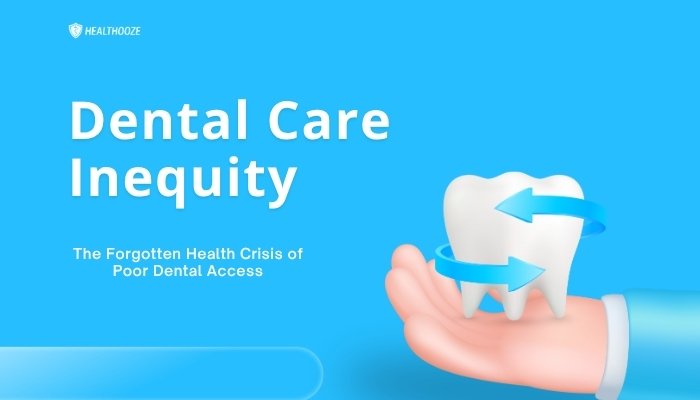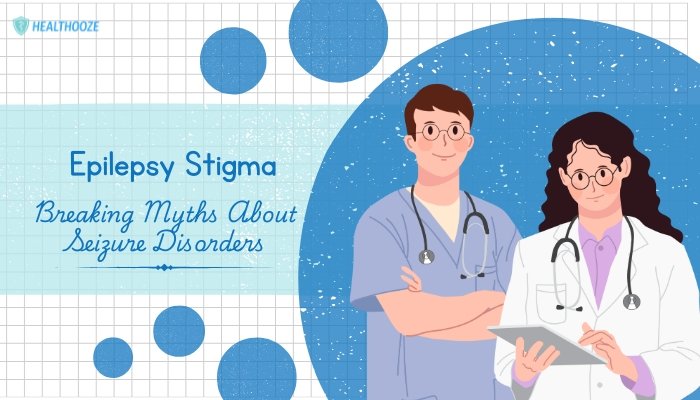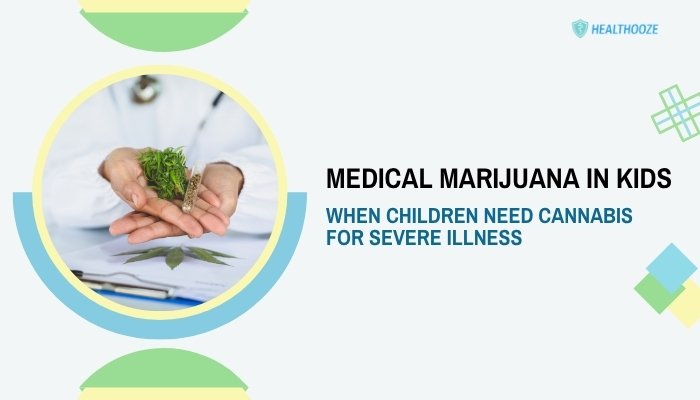Introduction
When families and communities discuss teenage mental health, issues like depression, anxiety, or bullying often come to the forefront. However, self-harm—particularly cutting or other forms of deliberate self-injury—represents a serious but quieter epidemic among adolescents.
Driven by emotional distress, teens might resort to hurting themselves to cope with overwhelming feelings, leaving parents, peers, and educators concerned and unsure about how to respond.
This article explores why teens engage in self-harm, how to recognize the subtle clues, and the steps to help these young people find healthier ways to manage inner turmoil.
Understanding Self-Harm
Defining Self-Injury
Self-harm, also called self-injury or non-suicidal self-injury (NSSI), involves deliberately causing pain or damage to one’s own body without suicidal intent. Cutting (using razors, blades, or sharp objects to make superficial or deeper skin incisions) is among the most common methods. Other forms include burning, scratching, hitting oneself, or interfering with wound healing.
Although self-harm can overlap with suicidal ideation, in many cases, it is a coping strategy rather than an overt wish to die. The act temporarily relieves emotional pain, allowing the individual to express or distract themselves from distress they cannot verbalize.
Why Teens Are Vulnerable
Adolescence is a period of dramatic physiological and emotional growth, which can amplify feelings of confusion, loneliness, or self-doubt. Societal and familial pressures—like academic performance, social acceptance, or complicated home environments—may compound a teen’s stress, making them more prone to harmful coping methods if they lack constructive outlets. Additionally, mental health conditions such as depression, anxiety, borderline personality traits, or post-traumatic stress disorder (PTSD) often co-occur with self-harm.
Risk Factors and Motivations
Common Triggers
- Emotional Distress: Unresolved grief, heartbreak, bullying, or family conflict can spark overwhelming sadness or frustration that leads to self-injury.
- Low Self-Esteem: Negative self-image or chronic self-criticism might push a teen to punish themselves physically.
- Trauma: Physical, sexual, or emotional abuse can manifest in self-harm, acting as a form of self-directed anger or an attempt to regain some control.
Functions of Self-Harm
Teens may describe cutting as:
- Emotional Release: Physical pain or bleeding gives a fleeting sense of calm or “release,” temporarily overshadowing emotional agony.
- Numbing or Distraction: By focusing on physical pain, the teen can momentarily distract themselves from intangible worries.
- Self-Punishment: Feelings of guilt or shame can drive them to hurt themselves, believing they “deserve” pain.
- Communication: For those struggling to articulate mental distress, cuts or scars might visually signal their turmoil, even if unconsciously.
Identifying the Signs
Physical Clues
- Unexplained Cuts or Scars: Often on arms, thighs, or torso—places teens can hide under clothing.
- Frequent Bandages: Recurrent “accidents” or improbable excuses for injuries that appear linear or pattern-like.
- Wearing Long Clothing: Even in hot weather, to conceal fresh wounds or scars.
Behavioral and Emotional Indicators
- Social Withdrawal: Reduced social contact or skipping favorite activities out of fear others might notice injuries.
- Mood Changes: Sudden irritability, anxiety, or persistent sadness might escalate.
- Cover Stories: Vague or inconsistent explanations for cuts or bruises.
- Increased Secrecy: Keeping personal items hidden (e.g., blades), or reacting strongly if someone enters their room unexpectedly.
Online Content
Some youth find websites or forums romanticizing self-harm or providing tips. Parents or guardians noticing dark or self-harming content on social media or diaries should see it as a possible red flag.
Approaches to Prevention and Support
Open Conversations
Rather than reacting with shock or anger, calmly address concerns by expressing empathy and a desire to understand. Teens often need reassurance they won’t be punished or ridiculed. Actively listening can yield crucial insights into underlying factors, from bullying to unmet emotional needs.
Professional Intervention
- Therapy and Counseling: Cognitive Behavioral Therapy (CBT), Dialectical Behavior Therapy (DBT), or other modalities help teens build emotional regulation and find healthy coping strategies.
- Family Therapy: Encourages improved communication, fosters supportive home environments, and clarifies how parents can respond non-judgmentally.
- Medication: Sometimes used if an underlying condition (e.g., depression) significantly contributes to self-harm. A psychiatrist can recommend short- or long-term treatment.
Developing Healthy Alternatives
Encourage activities or skill-building that provides safe emotional outlets:
- Art, Music, or Journaling: Creative expression helps release distress.
- Physical Exercise: Activities like running, dancing, or swimming can channel tension constructively.
- Breathing or Relaxation Techniques: Mindfulness exercises to shift focus when urges to self-harm arise.
Navigating Recovery and Moving Forward
Reducing the Urge to Self-Harm
Identifying triggers—like stressful family arguments, academic pressure, or negative self-talk—enables preventative measures. Over time, therapy and practice can lessen the frequency or intensity of self-harm urges, teaching individuals to label and soothe feelings differently.
Encouraging Resilience
- Celebrate Progress: A teen who used to cut daily but now goes a week or two without self-injury can gain pride in their coping progress, reinforcing a positive feedback loop.
- Reinforce Positive Relationships: Nurturing supportive friendships, peer mentors, or caring adult figures fosters belonging and confidence.
- Set Realistic Goals: Complete abstinence from self-harm might take time; incremental improvements in frequency or intensity can still reflect significant growth.
Role of Community and School
School counselors or mental health programs can detect early signs if staff are trained to spot changes in students. Anonymous tip lines or programs ensuring mental health resources are equally accessible remove barriers for seeking help.
Conclusion
Teen self-harm—particularly in the form of cutting—is more than just a “phase” or attention-seeking behavior. It is often a cry for help or a maladaptive coping mechanism for deep emotional or psychological pain. By learning to recognize the physical and behavioral signals, offering professional and familial support, and empowering teens with healthier strategies, we can dismantle the silence and fear surrounding self-injury. When guided with empathy, skillful counseling, and a robust safety net, adolescents who self-harm can find hope, healing, and renewed confidence in themselves and their future.
References
- Whitlock J, Purington A, Gershkovich M. Understanding self-injury among adolescents: Emotional regulation, identity, and mental health. J Am Acad Child Adolesc Psychiatry. 2020.
- Muehlenkamp JJ, Claes L, Havertape L, Plener P. International prevalence of adolescent non-suicidal self-injury and deliberate self-harm. Child Adolesc Psychiatry Ment Health. 2016.
- Nixon MK, Heath NL. Self-injury in youth: The essential guide to assessment and intervention. Routledge. 2009.
- http://afsp.org/

